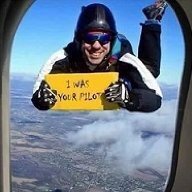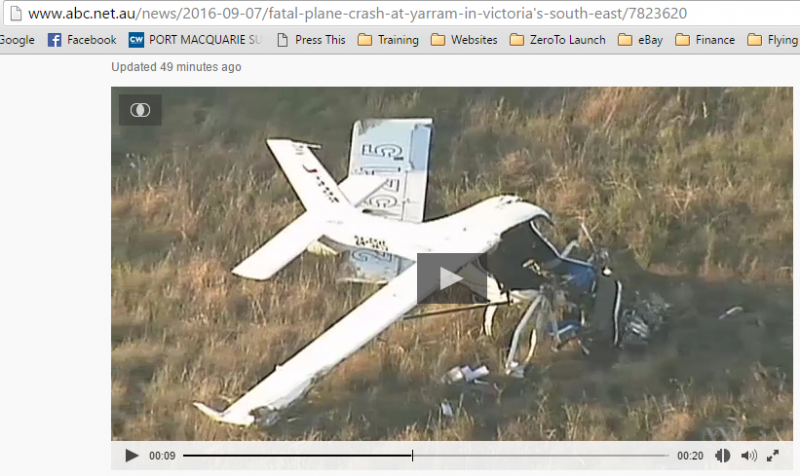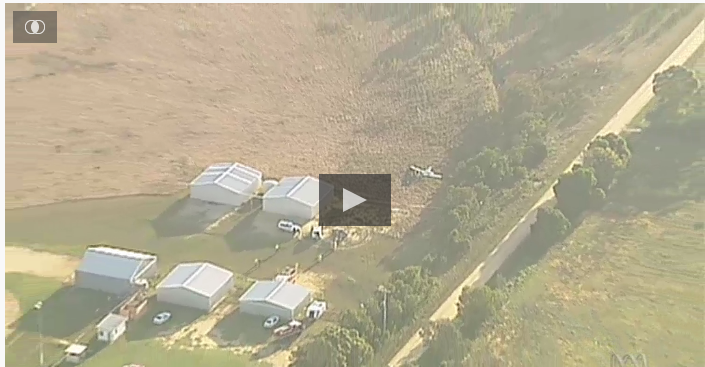-
Posts
1,532 -
Joined
-
Last visited
-
Days Won
15
Content Type
Profiles
Forums
Gallery
Downloads
Blogs
Events
Store
Aircraft
Resources
Tutorials
Articles
Classifieds
Movies
Books
Community Map
Quizzes
Videos Directory
Posts posted by DrZoos
-
-
Welcome..RVwhat???
-
 1
1
-
-
I think we are saying the same thing in a different way...clearly Boeing and Airbus have record orders meaning more pilots... but does that translate to a shortage, and even if it does where is the shortage going to occur...will it simply be vacancies in the DRC, Syria and Iraq, or will those shortages flow through to western countries and QF, JQ etc
-
Nev , i don't doubt your reading it, i just doubt the reliability of such shortages...heard this too many times before, including while teaching...
Every other week we here "teacher shortages" at the same time we have a list of 60 available casual teachers ringing asking, begging for more work and so many trainees that we can find the time to do the paperwork for them all..
My opinion is a shortage is generally only true when wages rise and advertised vacancies appear....
Going back to the teaching example, there probably are examples of shortages in isolated remote areas where no one wants to live and you have massive socio-economic and behavioural problems to deal with rather than educating... but in the real word there is certainly no shortage.
-
Wonder if that's fact or fiction..or is it just a shortage in the locations where no one wants to live or work....There's a world wide shortage of pilots at the top so, Maybe now's the time for some. NevThere are not many vacancies or programs advertising or recruiting ....
-
Not many private people "own" turbines...do you mean you want to fly other people's turbines, cause if so your more likely to be heading towards CPL
-
RPL you need class 2
Pilot Cert you dont need it..
While ever your a student pilot your fine..once you graduate...you suddenly become unsafe for CTA and will require a RPL or to gofly elsewhere... dont ask..its just ridiculous....
As far as your head injury, you will be fine, you will get a class 2 approved....and you can argue the need to see a neurologist with avmed..go see your gp and get your dame both to give you a letter saying need for neurologist is unnecessary and CASa will send it to a review panel meeting to have that over turned... failing that write, write write and argue and they actually are flexible a bit...
3 years with no symptoms is all you need in writing ....and argue the case...the CASA Dr that initially viewed it is over zealous and creates work...the review committee has the director breathing down their necks and is subject to political pressure
-
Sorry it wont paste, google news air asia sydney to KL lands in melbourne
-
 1
1
-
-
-
Wow that seriously rates on the swearing scale
-
It is little like religious schools teaching students sex is a dirty, dangerous sin...
What counts is encouraging a very healthy respect for the serious and likely consequences of reckless action and encouragement of the enjoyment of responsible pleasure
-
 2
2
-
-
RIP young fella
-
 1
1
-
-
Just junky ones we buy of eBay nothing exciting...its the thought that counts
-
 1
1
-
-
A blue pill could easily have uprighted the aircraft
-
 4
4
-
-
Welcome, what are you going to buy?
-
I do enjoy a good rant, its my favourite thing on facebook....me and my mates give out medals to those who have the best rants
-
-
You forgot to say rant over!
-
I can see both sides,its great to be able to vent, but its also fantastic when board members or connected people communicate with us...
At the end of the day a forum should always promote freedom of speech within certain tolerable limits, even if it was on RAA own domain.
-
The simplest answer I can think of to the original question is as the aircraft slows, the Angle of Attack (A of A) increases and the center of pressure (C of P) moves. The aircraft slows and the elevator and stabiliser have changed shape (due to up elevator - back pressure on controls), producing negative lift so that the tail drops and the nose pitches up as aircraft pitches around lateral axis. As the aircraft slows this A of A increases more and more until the stall occurs.
While the wing and elevator/stabiliser continue to produce lift this works, the aircraft continues to fly in a nose high attitude. The aircraft continues to seem to fly normal, even though it may actually begin descending due to lift and thrust being less than weight and drag....ie total reaction formula....Some aircraft will descend all the way to the ground without snapping forward. Others will snap on or after stall as described below.
Eventually the aircraft exceeds A of A to point where wing rapidly develops turbulent airflow, produces significantly less lift and significantly more drag at the same time.....total reaction, significantly changes for the worst. Thrust and weight stay the same, but lift significantly drops at the same time as drag significantly increases.
The aircraft which was being held in an artificially nose high position from pilot input, reacts, with both a drop due to aircraft now in descent and a nose drop as aircraft rotates around lateral axis .... this combination of a loss of lift at the front of the aircraft, and a rotation is what gives the snap some describe at stall or shortly after.... for the most part its the rotation that the pilot notices most and describes as the snap. Its possibly the only time a beginning or non aerobatic pilot will experience a sudden rotation around the lateral axis other than a landing as they stall it on.
It is, just like when you hold a kids swing up and let it go, it drops around the axis suddenly, when the force holding it up is released suddenly.
The rotation can be exaggerated if the pilot simultaneously releases the back pressure and the "rear wing " (elevator and stabiliser) goes from producing negative lift to neutral, or positive for a moment due to its A of A.
Far from a perfect answer, but good enough to help, in some basic language i hope...
-
Welcome, enjoy:)
-
Great work....now get ready for an unforgettable moment...
-
 1
1
-
-
Put in fixed and mobile IMC cameras, works on the road !
-
 1
1
-
-
Ian, sorry haven't read that, but it wouldn't be CASA if there wasn't another 8 documents that need to be read in conjunction with that of which all 8 will contradict each other in some way...
Sounds cynical, but the amount of times I have read something from CASA and thought it to be the case, only to find a bunch of other documents that contradict it , I have lost count.....
-
 1
1
-
-
Flying light aircraft like a foxbat, will give you invaluable skills later...I learnt in one and its like a butterfly that gets buffeted by every breath of wind...
I have seen plenty of people that learned in foxbats land most things with ease, while also seeing lots of people who have landed many other aircraft struggling to land a foxbat...including career long commercial pilots
Save yourself a fortune and learn to fly all varieties, starting in a foxbat and progressing as the need arises. You wont regret learning to fly the small ones first. The lack of inertia, certainly develops some laser sharp reflexes...
-
 2
2
-





Is Managerialism coming to RA Aus?
in Governing Bodies
Posted
My L2 application has been on the desk 9 months...not happy
I know they have been snowed under and I accept that
And I think in virtually every other area they have done a fantastic job... but it it excruciatingly painful waiting 9 months for a phone call or email